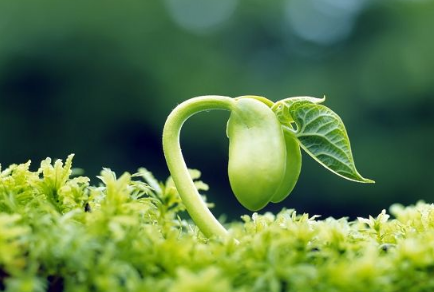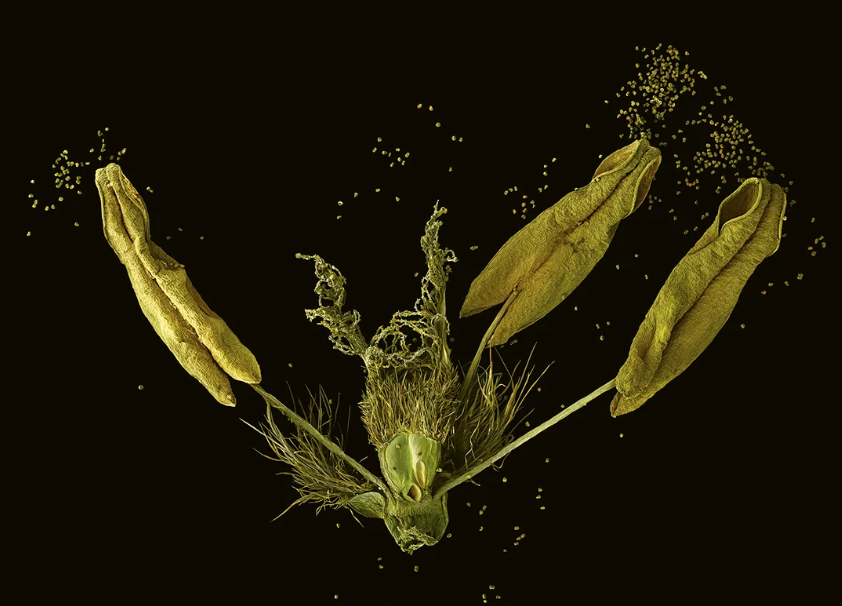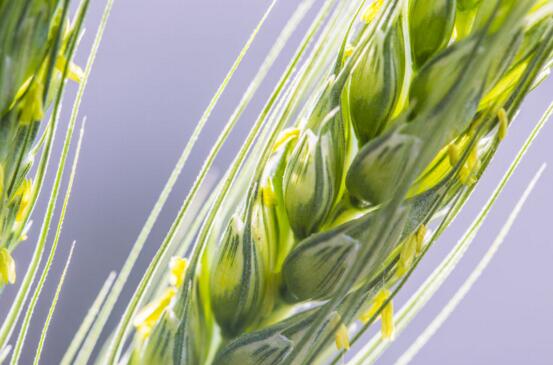创新背景
植物的能量储存和摄取是植物生长和农业发展的重要因素,玉米、大米和其他谷物的花粉需要储存淀粉作为能量沉积物,以便以后在施肥期间使用。
创新过程
德国马克斯普朗克植物育种研究所的Ivan Acosta博士领导的研究小组和瑞典于默奥植物科学中心、马克斯普朗克分子植物生理学研究所、美国罗格斯大学的同事合作研究了植物能量的来源以及花粉肥力问题,确定植物激素生长素和花粉肥力有直接联系,是花粉成熟期间能量产生的主要驱动力,相关研究成果发表在《当代生物学》上。
细胞生长和成熟的过程需要不断能量摄入,能量摄取的变化发生在发育的早期,会在生长过程中发育出不同的功能。植物发育过程中的能量管理转换尚处于起步阶段,不如动物细胞的研究详细深入。

植物通过进行光合作用进行发育和生长,在光合作用过程中,二氧化碳、水和能量通过光的形式转化为氧气、葡萄糖和淀粉。淀粉作为能量沉积物储存,保证植物在没有光能时继续生长和发育。淀粉储存是谷物花粉的发育和生长所必需的。没有产生淀粉的谷物花粉不肥沃,无法进行繁殖。
研究发现大麦花粉利用生长素激素控制淀粉的产生,生长素是促进大麦花粉成熟期间能量流动的必需激素。研究人员利用分子遗传技术发现,大麦花粉能够独立于母株之外自行产生生长素。生长素以ATP和三磷酸腺苷的形式产生能量的基因和途径输出。活性生长素的存在增加能量产生途径通量,导致花粉中大量的淀粉积累。

团队在研究中鉴定出一种负责生长素合成最后一步的花粉特异性酶HvYUCCA4。使用名为雄性不育遗传38的突变植物并控制HvYUCCA4不起作用,花粉就无法产生生长素和储存淀粉。在突变植物的帮助下,研究团队进一步了解了花粉制造淀粉的复杂机制和敏感时间设置。
为了确保花粉的成功发育,淀粉生产需要在花粉从产生和分散花粉的花药释放之前的特定点开始,生长素是协调这些事件的正确时间的信号。研究将大麦花粉作为模型系统,进一步研究了生长素的合成和信号传导,且不产生其他植物中通常与生长素缺乏相关的多效性效应。

HvYUC4在大麦花粉发育中的特殊功能表明,这种特殊酶的化学抑制性是控制谷类作物雄性生育力的方法,这将使多个亲本对之间的大规模杂交种子生产成为可能。
创新关键点
利用分子遗传技术和花粉特异性酶研究植物花粉生产生长素和淀粉的情况,进而探究作物能量的变化。
创新价值
新发现推动了对大麦和其他作物肥力的控制调节工作的开展,是改善植物育种的重要工具和开发新的杂交作物的重要一步,将对基础植物研究和应用谷物育种产生重大影响,不断向可持续农业发展迈进。
The importance of pollen auxin and starch storage
The research team led by Dr. Ivan Acosta of the Max Planck Plant Breeding Institute in Germany and colleagues from the Umeå Plant Science Center in Sweden, the Max Planck Institute for Molecular Plant Physiology, and Rutgers University in the United States collaborated to study the source of plant energy and pollen fertility, and determined that plant hormone auxin and pollen fertility are directly related and are the main driving force for energy production during pollen maturity.
The process of cell growth and maturation requires constant energy intake, and changes in energy uptake occur early in development and develop different functions during growth. The energy management conversion during plant development is still in its infancy, and it is not as detailed as the study of animal cells.
Plants develop and grow through photosynthesis, in which carbon dioxide, water, and energy are converted into oxygen, glucose, and starch in the form of light. Starch is stored as an energy deposit, ensuring that plants continue to grow and develop when there is no light energy. Starch storage is necessary for the development and growth of grain pollen. Grain pollen that does not produce starch is not fertile and cannot be propagated.
Studies have found that barley pollen controls starch production using the auxin hormone, an essential hormone that promotes energy flow during barley pollen maturation. Using molecular genetic techniques, the researchers found that barley pollen was able to produce auxin on its own independently of the mother plant. Auxin is output from genes and pathways that produce energy in the form of ATP and adenosine triphosphate. The presence of active auxin increases the energy production pathway flux, resulting in the accumulation of a large amount of starch in pollen.
In the study, the team identified hvYUCCA4, a pollen-specific enzyme responsible for the final step of auxin synthesis. Using a mutant plant called Male Sterile Inheritance 38 and controlling HvYUCCA4 does not work, pollen is unable to produce auxin and store starch. With the help of the mutant plants, the research team further understood the complex mechanisms and sensitive time settings of pollen-making starch.
To ensure the successful development of pollen, starch production needs to start at a specific point before the anthers that produce and disperse pollen are released, and auxin is a signal of the right time to coordinate these events. Using barley pollen as a model system, the study further investigated auxin synthesis and signaling without producing the multi-potency effects commonly associated with auxin deficiency in other plants.
The special function of HvYUC4 in barley pollen development suggests that the chemical inhibition of this particular enzyme is a method of controlling male fertility in cereal crops, which will enable large-scale hybrid seed production between multiple parent pairs.
智能推荐
生物育种科学创新思维 | 利用分子遗传技术和花粉特异性酶研究植物花粉生产生长素和淀粉
2022-07-27利用分子遗传技术和花粉特异性酶研究植物花粉生产生长素和淀粉的情况,进而探究作物能量的变化。
涉及学科涉及领域研究方向生物育种创新思维 | 通过研究遗传参数和甲烷排放量培养气候友好型奶牛
2022-08-22通过测量奶牛农场中的甲烷排放量和二氧化碳排放量了解奶牛排放甲烷的遗传参数,有助于进行动物育种,培养气候友好型奶牛,在保证养殖效益和成本的同时进行有效的环境保护,减少温室气体排放。
涉及学科涉及领域研究方向生物育种创新思维 | 通过研究遗传参数和甲烷排放量培养气候友好型奶牛
2022-08-22通过测量奶牛农场中的甲烷排放量和二氧化碳排放量了解奶牛排放甲烷的遗传参数,有助于进行动物育种,培养气候友好型奶牛,在保证养殖效益和成本的同时进行有效的环境保护,减少温室气体排放。
涉及学科涉及领域研究方向生物育种创新思维 | 通过调节SlLOB1基因可培育出保质期较长的番茄
2022-08-23研究团队找到了延缓水果软化的SlLOB1基因变异,未来,育种人员可以将其引入商业品种,从而生产出高质量、口感好,而且不容易变软的番茄。
涉及学科涉及领域研究方向